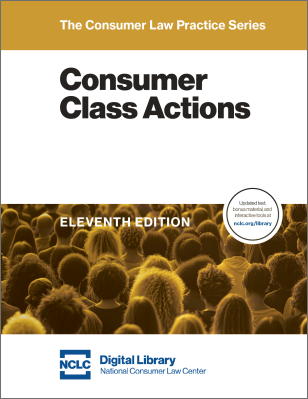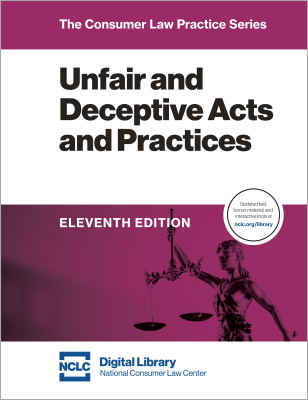On June 28 and July 1, the Supreme Court issued two decisions that will facilitate greater challenges to federal agency rules. This article focuses not on the rulings’ impact on agency rulemaking generally, but on the implications of these decisions for consumer attorneys bringing claims relying on federal agency rules and agency interpretations of federal consumer laws. The article takes a step-by-step approach to responding to these decisions.
The Double Whammy
In Loper Bright Enterprises v. Raimondo, 144 S. Ct. 2244 (2024), the Supreme Court overruled the long-standing doctrine for reviewing federal agency rulemaking based on an interpretation of a statute, as set forth in Chevron, U.S.A., Inc. v. Nat. Res. Def. Council, Inc., 467 U.S. 837 (1984). Chevron required courts to defer to reasonable agency interpretations of a statute when that federal statute was ambiguous, or when there was some other congressional intention to delegate interpretive authority to the agency. Notably, Chevron deference mainly applied to rules and regulations adopted through notice and comment rulemaking procedures under the Administrative Procedures Act (APA).
Loper Bright holds that, pursuant to the APA, courts have the duty to interpret statutes to ensure that agencies act within their statutory mandate. The Court further repeatedly mentioned the courts’ role in determining whether Congress’s delegation to agencies falls within constitutional limits. At bottom, this decision increases courts’ authority to strike down federal agency rules that rest on an interpretation of a statute as having been enacted outside of the agency’s statutory authority, both in facial challenges under the APA and in “as applied” challenges in response to individual litigation or agency enforcement actions alleging violations of the rules.
Note, however, that Loper Bright only relates to challenges to federal rules and regulations; it is irrelevant to challenges to federal or state statutes, state rulemaking, state common law, or other federal agency action that never would have received deference under Chevron. Prior treatment of such authority should remain unchanged.
A few days after deciding Loper Bright, in Corner Post, Inc. v. Bd. of Governors of Fed. Rsrv. Sys., 144 S. Ct. 2440 (2024), the Court interpreted when the six-year statute of limitations begins to run for actions against the United States under the APA that challenge a final federal agency action, such as promulgation of rules. The Court held that the six-year period does not start running when the rule is first promulgated, but when the challenger is first injured by the rule.
In Corner Post, the plaintiff business was created fewer than six years before it filed suit, even though more than six years had passed since the rule became final. As a result of this decision, those wishing to challenge an old, well-established rule can use a new business or other entity in a jurisdiction that will be friendly to the challenge to file suit, so long as the new entity can allege that the rule injured them within the last six years.
Exercise Caution Before Using Loper Bright and Corner Post to Challenge Bad Rules
In theory, Loper Bright and Corner Post could make it easier for anyone, including consumers, to challenge federal agency rules by eliminating deference to agencies’ interpretation of their statutory authority and extending the statute of limitations. Consumers should consult with experts and think carefully, however, before bringing such challenges.
Some reasons to avoid such challenges include that many statutes give companies defenses if they rely in good faith on an agency regulation or interpretation, if the regulation turns out to be invalid. See, e.g., FDCPA, 15 U.S.C. § 1693k(e). In addition, problematic rules are likely to be older, longstanding ones that fall within the Skidmore factors for deference. Many courts are also often not sympathetic to consumer claims and may find reasons to uphold rules that protect industry.
APA challenges are also complex and time consuming. Practitioners are encouraged to consult with experts to think through the legal theories and larger implications before bringing such challenges. NCLC staff are always available to discuss the strategy around a challenge to a regulation or rule. If a challenge is pursued, practitioners who do not generally focus on APA issues should consider co-counseling with experienced APA litigators.
Eight-Step Approach to Bringing Rule-Based Consumer Claims After Loper Bright
The remainder of this article focuses on consumer claims against a business based on a federal agency regulation. After Loper Bright, a defendant is more likely to defend itself in the litigation by challenging any regulation that a consumer relies upon. The following eight steps will assist consumer litigators in protecting their cases from Loper Bright-based challenges.
Step One: Thoughtful Selection of the Court & Claims
By no longer requiring deference to an agency’s interpretation of its authorizing statute, Loper Bright gives courts more latitude to strike down an agency interpretation that a particular judge believes is not within the meaning of the statute or is not authorized by the agency’s statutory authority. As a result, it is now more important than ever to avoid bringing consumer claims based on agency rules before a judge or in circuits that are likely to be hostile to consumer claims. For example, outcomes often are different in cases before the Fifth and Ninth Circuits.
If a federal court is likely to invalidate the agency rule, consider avoiding claims under agency regulations. Instead, bring claims based on the statute that the rule implements, or under state law as set forth in Steps Seven and Eight below. If state courts provide a better forum, practitioners might avoid pleading any federal claim to avoid federal question jurisdiction. Note that a state claim that merely implicates a federal rule, such as where the state law incorporates or models itself off of a federal one, is likely to not be removable to federal court. See, e.g., NCLC’s Unfair and Deceptive Acts and Practices § 11.5.6.
Step Two: Review Whether the Applicable Regulation Has Been Enjoined or Struck Down
After the court’s decisions in Loper Bright and Corner Post, litigation challenging agency rules, new and old, has already increased. Therefore, the first step for a consumer attorney pursuing a claim based on a federal agency rule is to check to make sure that the regulation has not been enjoined or vacated in an order that controls in the applicable jurisdiction. If the regulation has been vacated by a court that controls in your jurisdiction, go to Steps Seven and Eight, below.
If the regulation has merely been enjoined pending litigation, first check to see if the preliminary injunction runs only as to the plaintiff in that case, or to the public at large. Even if the regulation has been stayed pending litigation, it may still be beneficial to allege the violation of the rule from the start, so as to avoid needing to file for leave to amend in the event that the regulation is later upheld. In these cases it is especially important to frame violations of regulations as violations of underlying substantive statutes first, per Step Seven.
Step Three: Identify the Likely Nature of the Defense to the Consumer’s Rule-Based Claim
The next step for consumer litigants in responding to Loper Bright is to identify the nature of a defendant’s likely defense to the consumer’s rule-based claim. Is the defendant arguing the regulation is inconsistent with or not authorized by the underlying statute, and thereby challenging the validity of the regulation itself? If so, go to Step Four.
Or is the defendant likely to claim that the regulation does not apply to the defendant’s specific conduct, that is, that the defendant has not violated the regulation? Such a defense is not determined by the standard announced in Loper Bright.
Instead, in determining whether an agency regulation applies to the defendant’s conduct, courts should defer to that agency’s interpretation of its own regulation, known as Auer deference. See Auer v. Robbins, 519 U.S. 452 (1997) (courts should defer to agency interpretation if within agency's authoritative or official position, the interpretation implicates its substantive expertise, and reflects its “fair and considered judgment”). See also Kisor v. Wilkie, 588 U.S. 558 (2019) (discussing Auer deference).
An agency’s interpretations of its own rules can be found in the supplemental information accompanying the Federal Register notice announcing the rule or the initial proposed rule, or in agency guidance, enforcement actions, or other agency pronouncements. NCLC’s treatises cite extensively to these materials on the topics they address and can provide a good starting place. If the defendant is not challenging the validity of the regulation, but instead its application, go to Steps Seven and Eight, below, particularly if the defendant’s defense has at least some merit.
Step Four: Determine Whether Existing Precedent Upholds the Regulation
Even though Loper Bright overrules Chevron, that ruling does not affect prior court decisions upholding a federal agency rule, even if those decisions relied on Chevron. The Supreme Court explicitly held in Loper Bright that those decisions remain good precedent:
By [overruling Chevron], however, we do not call into question prior cases that relied on the Chevron framework. The holdings of those cases that specific agency actions are lawful—including the Clean Air Act holding of Chevron itself—are still subject to statutory stare decisis despite our change in interpretive methodology. See CBOCS West, Inc. v. Humphries, 553 U. S. 442, 457 (2008). Mere reliance on Chevron cannot constitute a “‘special justification’” for overruling such a holding, because to say a precedent relied on Chevron is, at best, “just an argument that the precedent was wrongly decided.” Halliburton Co. v. Erica P. John Fund, Inc., 573 U. S. 258, 266 (2014) (quoting Dickerson v. United States, 530 U. S. 428, 443 (2000)). That is not enough to justify overruling a statutory precedent.
Loper Bright, 144 S. Ct. 2273.
If existing precedent, binding on the court where your case is pending, upholds a regulation, then the defendant’s challenge to that regulation should be rejected, even if that precedent relied on Chevron.
Step Five: Review the Authorizing Statute, and Identify the Legal Source of the Challenge to the Regulation
Loper Bright recognizes that Congress establishes authority for agency action, and that the courts’ responsibility is to determine the bounds of that authority. That is, not all agency action, or regulation for that matter, constitutes a statutory interpretation that would be subject to de novo review under Loper Bright. As the Court notes, in some circumstances “the statute’s meaning may well be that the agency is authorized to exercise a degree of discretion. Congress has often enacted such statutes. For example, some statutes ‘expressly delegate[ ]’ . . . to an agency the authority to give meaning to a particular statutory term, . . . to ‘fill up the details’ of a statutory scheme, . . . or to regulate subject to the limits imposed by a term or phrase that ‘leaves agencies with flexibility,’ such as ‘appropriate’ or ‘reasonable.’” Loper Bright, 144 S. Ct. at 2263.
The Court went on to explain:
When the best reading of a statute is that it delegates discretionary authority to an agency, the role of the reviewing court under the APA is, as always, to independently interpret the statute and effectuate the will of Congress subject to constitutional limits. The court fulfills that role by recognizing constitutional delegations, fixing the boundaries of the delegated authority, and ensuring the agency has engaged in reasoned decision making within those boundaries. By doing so, a court upholds the traditional conception of the judicial function that the APA adopts.
Id. (internal marks and citations omitted).
That is, courts should show greater deference to an agency rule where Congress has explicitly delegated the agency authority to make a specific determination, such as defining a highly technical term or in matters relating to agency policymaking. Practitioners now should always review the specific grant of authority that the agency relied on prior to pursuing a claim under a federal rule or regulation, and identify the crux of the challenger’s argument under the APA. Look not only for general rulemaking authority under the statute, but any direction Congress gave regarding the specific rule at issue and any statutory definitions of key terms.
If the source of the challenge is that the agency acted outside of its statutory authority, or that the agency regulation, or operative definition of a key term, is inconsistent with the substantive statute in some way, then the challenge likely hinges on a matter of statutory interpretation, which is now subject to de novo review under Loper Bright. In that case, proceed to Step Six.
However, there are many situations where an agency’s actions are taken pursuant to a clear congressional delegation, or even a mandate, to exercise policymaking discretion—meaning the agency’s actions do not hinge on an interpretation of the statute’s ambiguity or silence on an issue, but instead focus on filling in the “details” of a legal regime that Congress expressly left for the agency to fill in. One way to defend agency action after Loper Bright would be to argue that the agency was acting pursuant to this broader authority to make policy determinations and exercise discretion under an explicit congressional mandate to do so.
In those cases, the main question should be whether the agency’s action was the result of reasoned decision making and thus not arbitrary and capricious under APA § 706(2)(A). This standard of review for agency policy determinations is far more deferential to agency action than matters of statutory interpretation under Loper Bright, and defending the challenge should just be a matter of identifying why an agency chose to exercise its discretion in one manner over other available alternatives. See, e.g., FCC v. Fox Television Stations, Inc., 556 U.S. 502, 513 (2009) (describing arbitrary and capricious review as “narrow,” merely requiring that an agency “examine the relevant data and articulate a satisfactory explanation for its action.”). The agency’s rationale for choosing one course of policy over another should be in the commentary that precedes the rule text in the Federal Register notice promulgating the final rule.
Many consumer protection and financial services statutes set forth clear authorization for specific agency action. For example, 15 U.S.C. § 1602(bb) defines a “high-cost mortgage” for purposes of the Truth in Lending Act, including a mortgage where points and fees are over a set amount. The statute provides that the amount is, “in the case of a transaction for less than $20,000, the lesser of 8 percent of the total transaction amount or $1,000 (or such other dollar amount as the Board shall prescribe by regulation).” That provision specifically gives the Board discretion to set a different amount.
In addition, on occasion a statute might expressly limit judicial review of agency action. For instance, 12 U.S.C. § 1715u(d) expressly prohibits any judicial review of agency rulemaking or other action related to the agency’s authority to assist mortgagors in default who have loans insured by the Federal Housing Administration.
Regardless of the breadth of the statutory grant of authority, a litigator should review the statute’s language and be prepared to present arguments why this particular rule falls squarely within the express statutory mandate. Some courts might also find persuasive legislative history setting forth the purpose of the statute and intent behind the grant of authority. Court opinions interpreting the statute consistent with the agency will also be helpful.
Step Six: Arm the Court with Reasons to Respect the Agency’s Statutory Interpretation
While overruling Chevron, the Loper Bright Court appeared to approve the pre-Chevron method of considering agency interpretations of their authorizing statutes set forth in Skidmore v. Swift & Co., 323 U.S. 134 (1944). Under Skidmore, reviewing courts ought to give agencies "respect" in interpreting their substantive statutes, which in practice amounts to treating the agency interpretation as a form of persuasive authority in a decision on statutory interpretation. The Court in Loper Bright identified several factors from Skidmore that it believed were particularly persuasive in deferring to an agency’s rulemaking when a statute is not facially clear. These include:
- Whether the agency’s interpretation is supported by “factual premises within [the agency’s] expertise,” presumably through thorough factfinding, Loper Bright, 144 S. Ct. at 2267;
- Whether the interpretation was “issued contemporaneously with the statute at issue,” id. at 2262; and
- Whether the interpretation of the statute has “remained consistent over time.” Id.
A litigator can support an agency interpretation under this deference regime by, first, providing the court with the agency’s factfinding record in support of the rule. The Loper Bright Court noted that, under the APA, deference is still required for agency factfinding in formal proceedings (which can only be set aside if “unsupported by substantial evidence”) and what the Court describes as agency policymaking (which is reviewed under an arbitrary, capricious, or abuse of discretion standard). See Loper Bright, 144 S. Ct. at 2261 (citing APA §§ 706(2)(A) and 706(2)(E)). The best source for such factfinding and policymaking is the supplemental information found in the Federal Register notice promulgating the rule and also in supplemental information in the Federal Register proposing the rule. The rulemaking record of comments filed with the agency might also be helpful. Of course, agency letters, bulletins, and other agency documents might also spell out the agency’s finding of facts and policy determinations.
An argument supporting the agency rule should include an explanation how the agency’s consideration was thorough and well-reasoned. Also supply court decisions interpreting the statute consistently with the agency’s interpretation, ideally from as close to the time of the statute’s passage as possible. Finally, to the extent possible, provide evidence that the agency’s interpretation of the statute has been on the whole consistent over time, and if the interpretation has changed, that any changes to the rule over time were anticipated by the statute and that Congress intended to give the agency authority to update the regulations as necessary to fulfill the purpose of the statute.
Step Seven: Bring Claims Under the Statute, Not Just Under the Rule
Loper Bright should have no impact on a court’s interpretation of federal statutes; indeed, the Court reasoned that its decision gave greater deference to Congress by properly enforcing the APA and enabling courts to fulfill their proper function of interpreting statutes. Thus, under Loper Bright, courts should continue to enforce statutory claims in the same manner that they have historically.
Even if a court rejects a rule as not consistent with the statute, the statute itself will remain in effect unless the court finds it unconstitutional. A consumer’s complaint should thus allege statutory violations, whether or not claims for rule violations are also included. This will allow the case to go forward, even if a rule is found invalid, to determine if the defendant has violated the statute itself, which often establishes general standards of conduct.
Claims can be framed as statutory violations, with citations to regulations being used to explain what the statute itself requires. For example, CFPB Regulation F, 12 C.F.R. § 1006.14(h), prohibits debt collectors from contacting a consumer if the consumer has requested that the collector not contact the consumer in that manner. Even if Regulation F were invalidated, the same conduct would still be a violation of a related Fair Debt Collection Practices Act (FDCPA) provision, 15 U.S.C. § 1692d, which prohibits conduct that harasses, oppresses, or abuses a consumer.
Alleging a violation based on the statutory provision, with Regulation F cited to help explain what that provision means, may dissuade a court from even considering, and spending much time discussing or questioning, the validity of the regulation in their final opinions. Similarly, FDCPA §§ 1692e and 1692f prohibit deceptive practices and unfair practices respectively, and much conduct that is a Regulation F violation can also be alleged to be unfair or deceptive in violation of these FDCPA statutory provisions. Practitioners should also refrain from using the regulation as the sole source of support for their statutory interpretations, and should instead incorporate traditional methods of statutory interpretation in addition to using the regulation as support for a particular interpretation.
Step Eight: Consider State Claims
Loper Bright solely relies on the federal APA and should have no bearing on state laws or regulations. Practitioners concerned that a court might find a federal regulation inapplicable or enacted without proper authority should include appropriate state claims under the state’s consumer protection statutes and state common law. Often the federal rule’s own supplemental information found in the Federal Register, analyzing why the practice is unfair or deceptive, will demonstrate why it also violates state law.
Every state has enacted a statute that prohibits deceptive and often unfair practices (UDAP statutes), and some prohibit abusive or unconscionable conduct. UDAP statutes were designed to be liberally and expansively interpreted. They typically provide for enhanced damages and attorney fees. See NCLC’s Unfair and Deceptive Acts and Practices.
States have also enacted statutes governing debt collection, credit reporting, lending, and a wide range of other consumer transactions. NCLC treatises provide state-by-state analyses of many of these state statutes. See, e.g., NCLC’s Fair Debt Collection Appx. D; NCLC’s Repossessions Appx. B; NCLC’s Home Foreclosures Appxs. D, E, F, G, H; NCLC’s Mortgage Lending Appxs. A, B, M, N; NCLC’s Mortgage Servicing and Loan Modifications Appx. D; NCLC’s Consumer Credit Regulation Appxs. B, C, D, E; NCLC’s Credit Discrimination Appx. F; NCLC’s Fair Credit Reporting Appx. H; NCLC’s Automobile Fraud Appxs. C, D; NCLC’s Consumer Warranty Law Appxs. F, G, H; NCLC’s Federal Deception Law Appxs. D, F, H, I.




